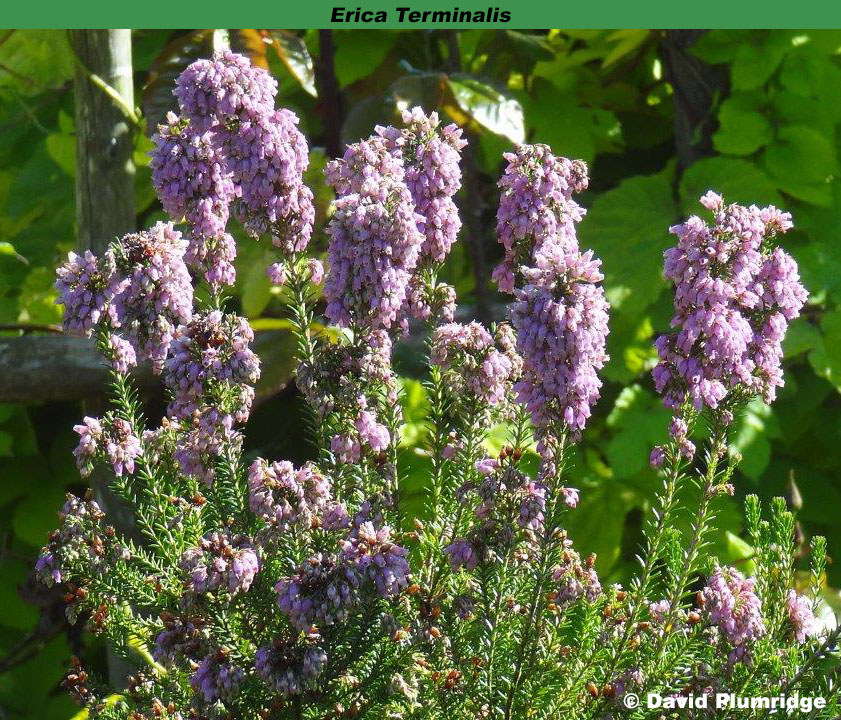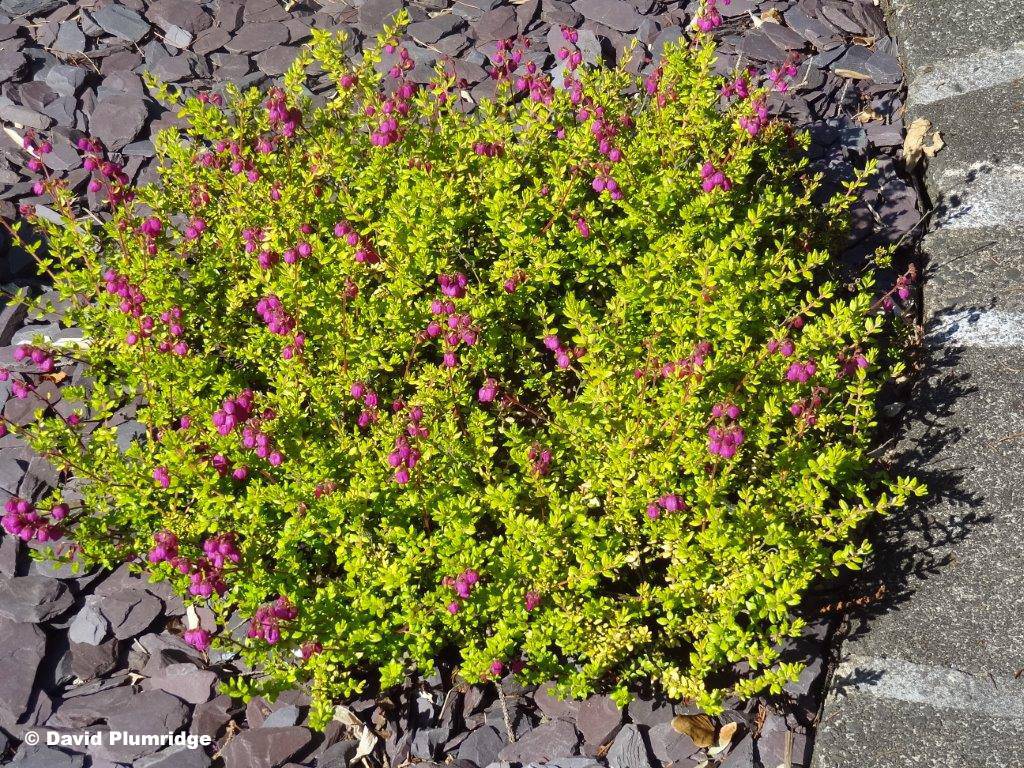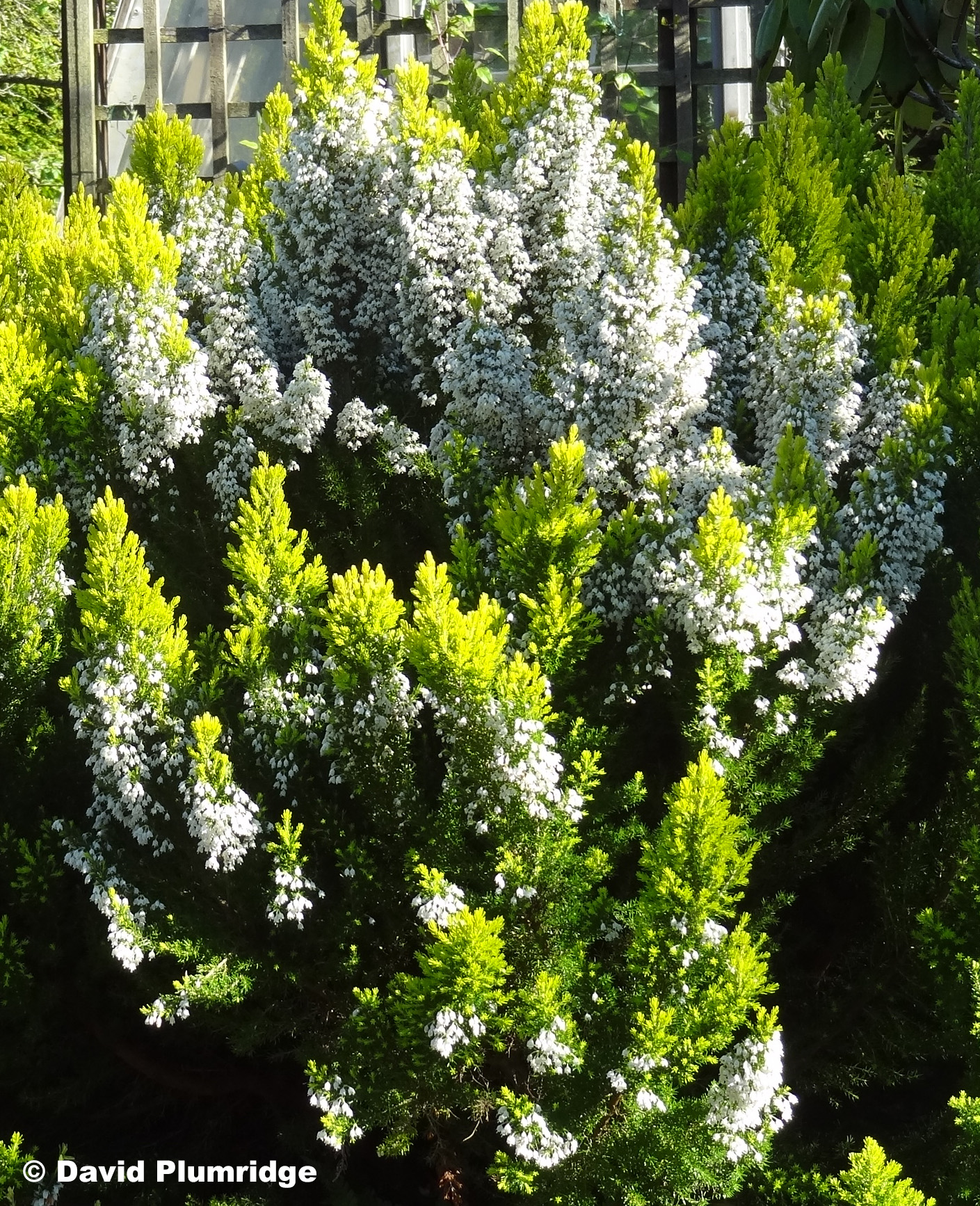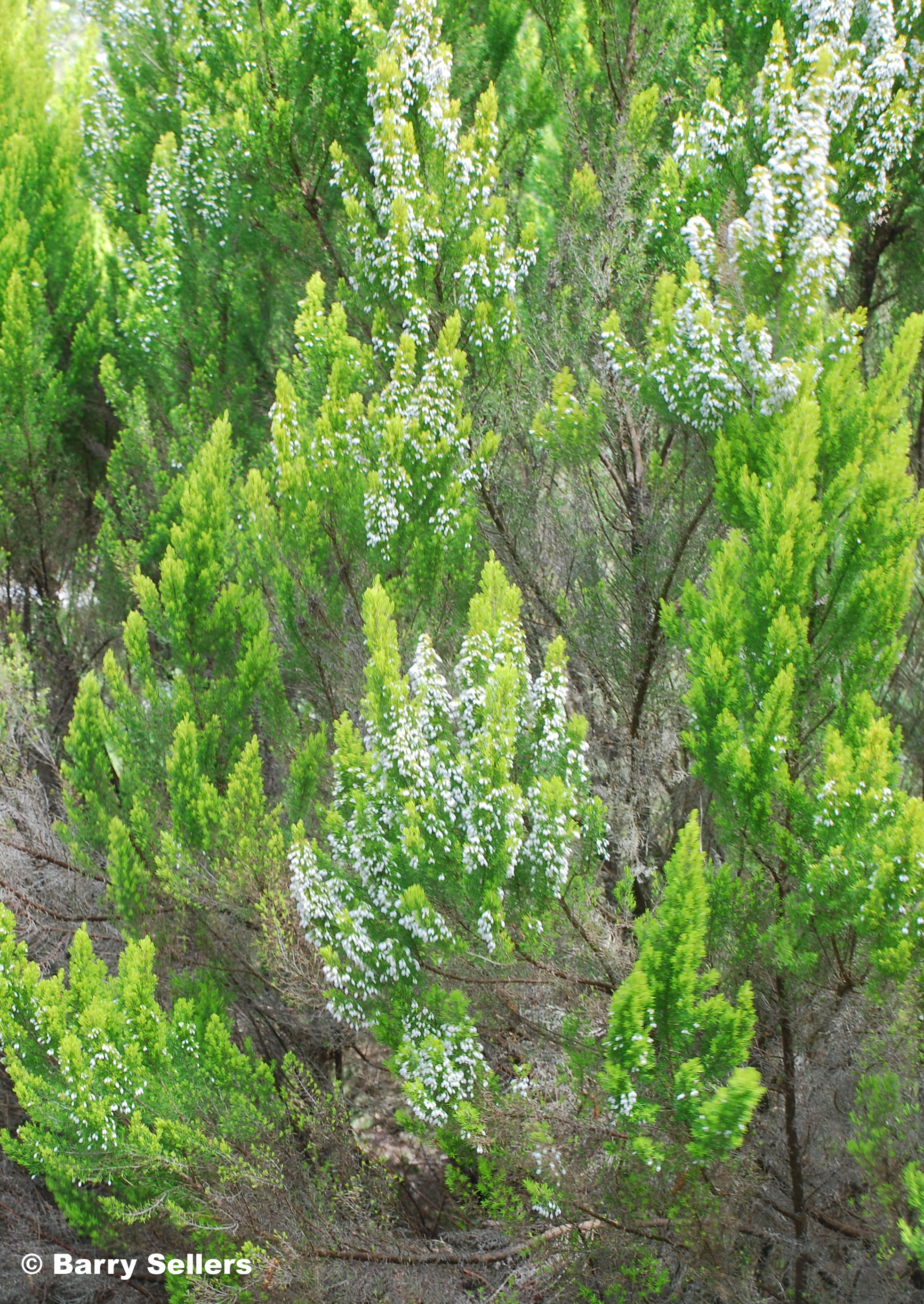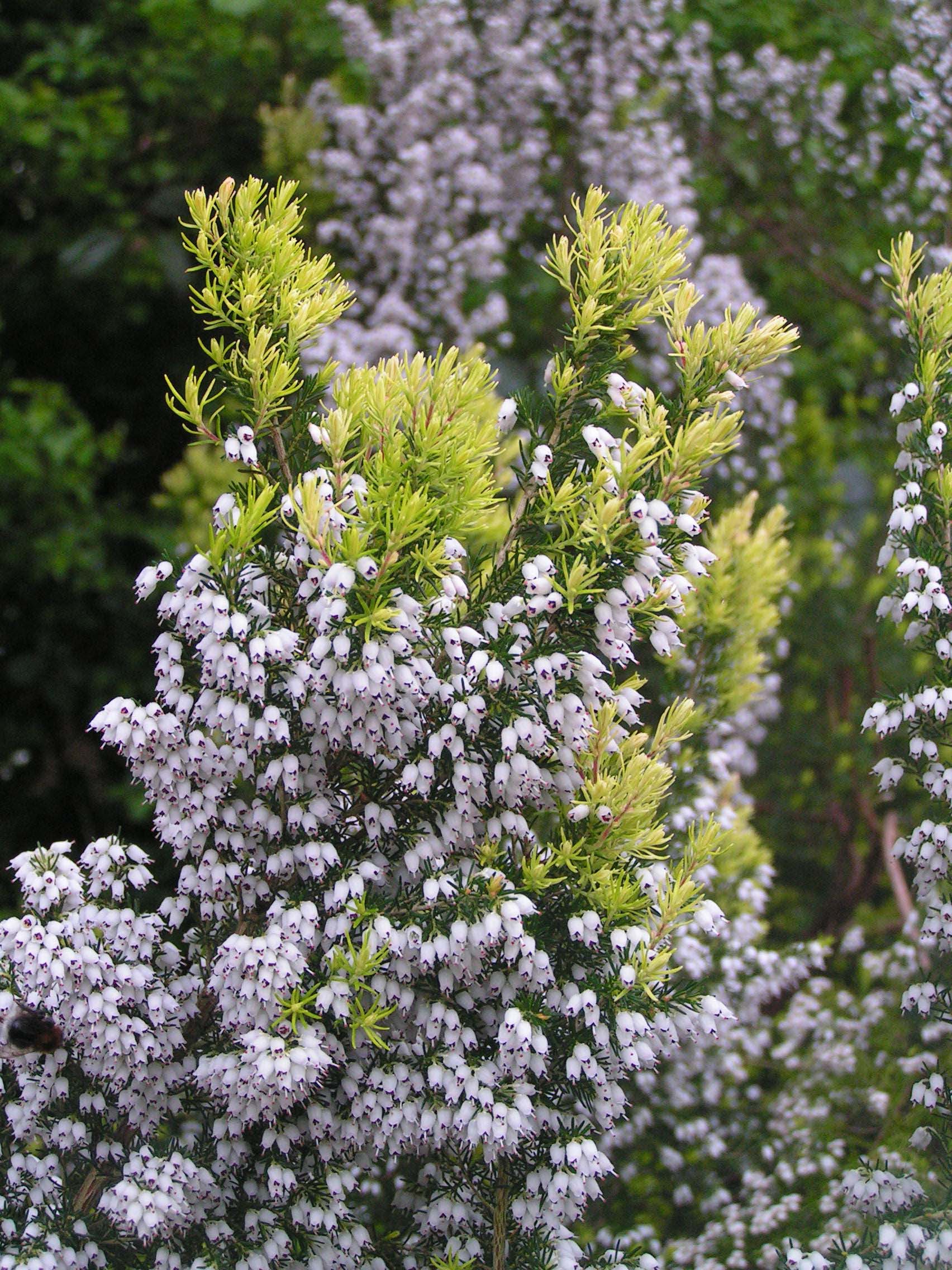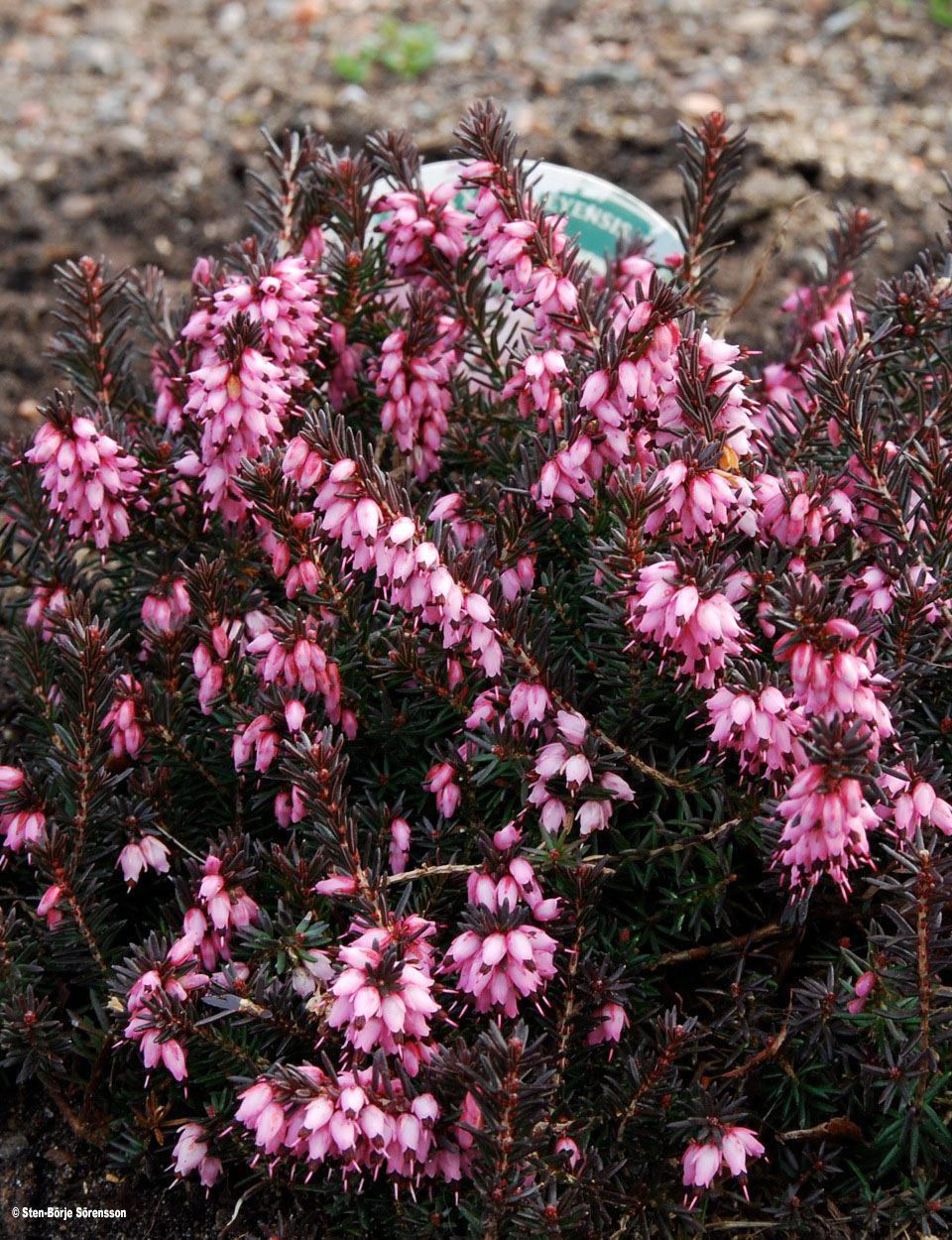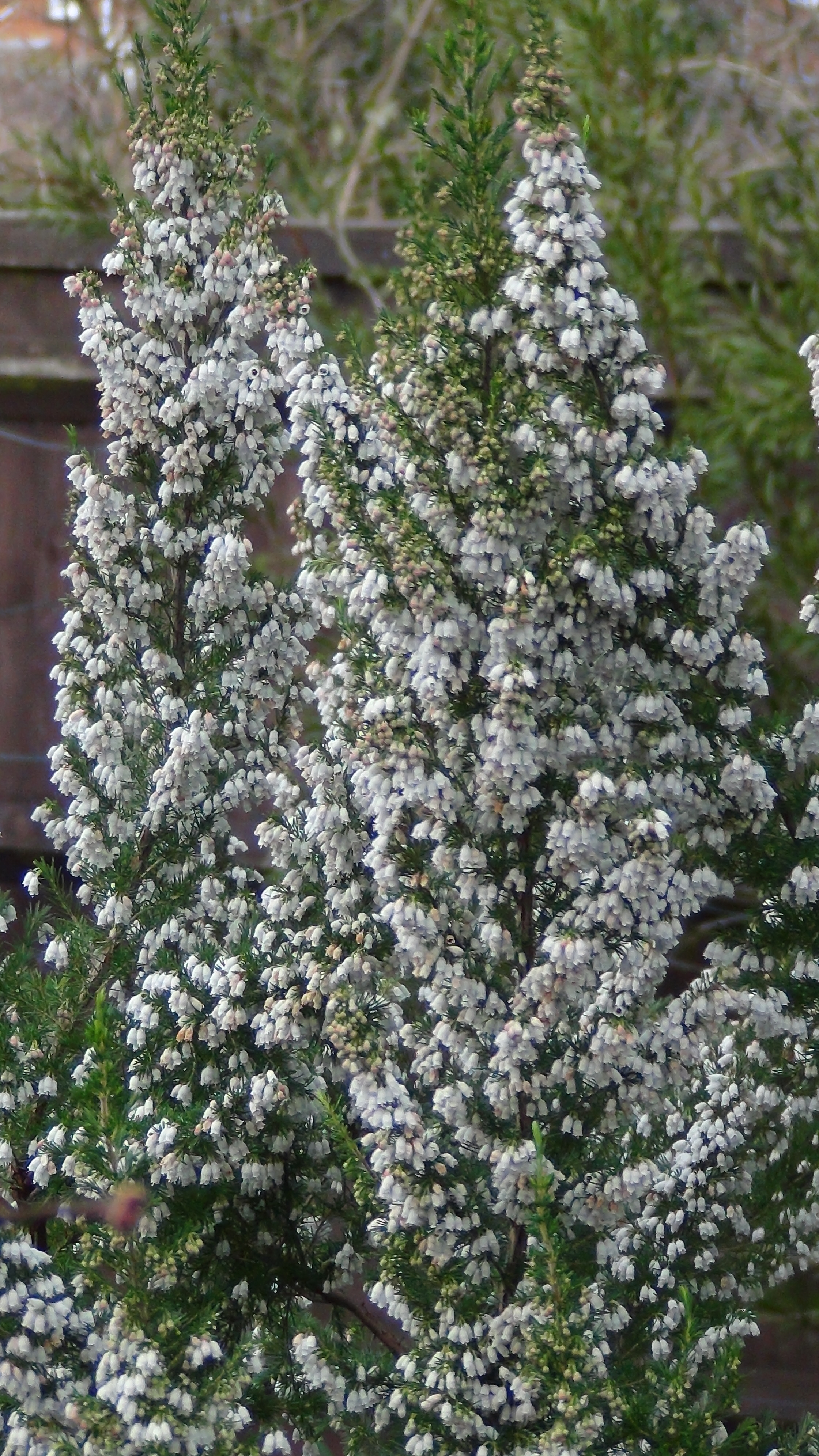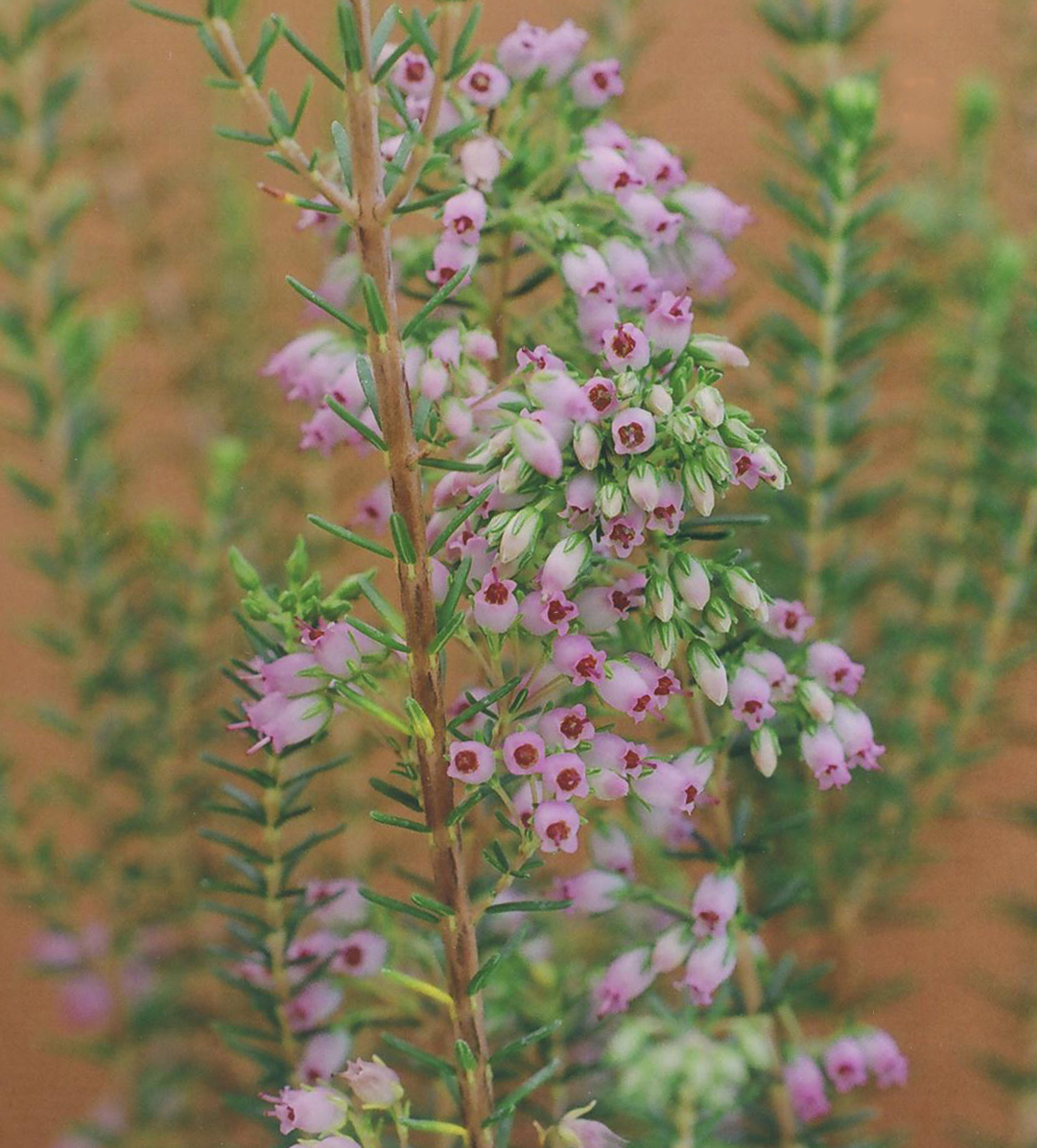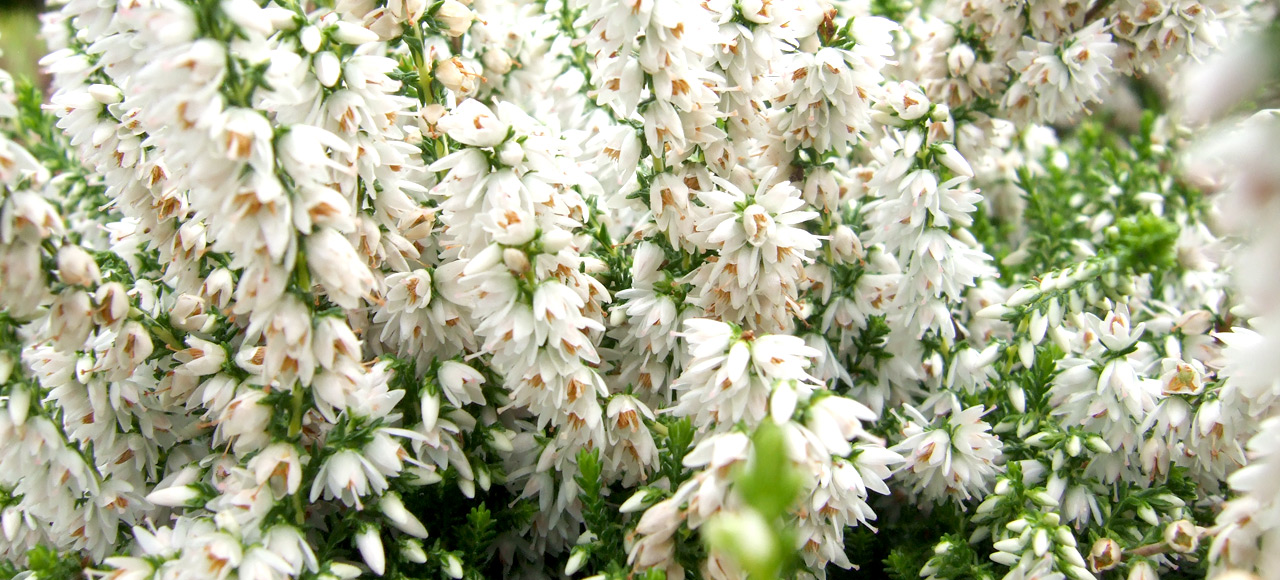Flowers in terminal umbels; calyx with 4 free sepals; corolla 6–7mm long, urn-shaped, lilac-pink (H11); stamens 8, included; anthers with 2straight spurs; nectar produced; style-end capitate, about 4mm diameter, exserted: July – September, faded flowers russet in winter; mid-green foliage with leaves in whorls of 4, to 9mm; open habit which can be vastly improved by pruning in the early years; height to at least 1m; spread 75–100cm.
Native in south-eastern Spain, Corsica, Italy including Sardinia and Morocco, and long-naturalized in Northern Ireland. This lime-tolerant species is surprisingly hardy and is suitable for zone 5. The faded bells provide an attractive russet hue all winter.
Image courtesy of David Plumridge.

